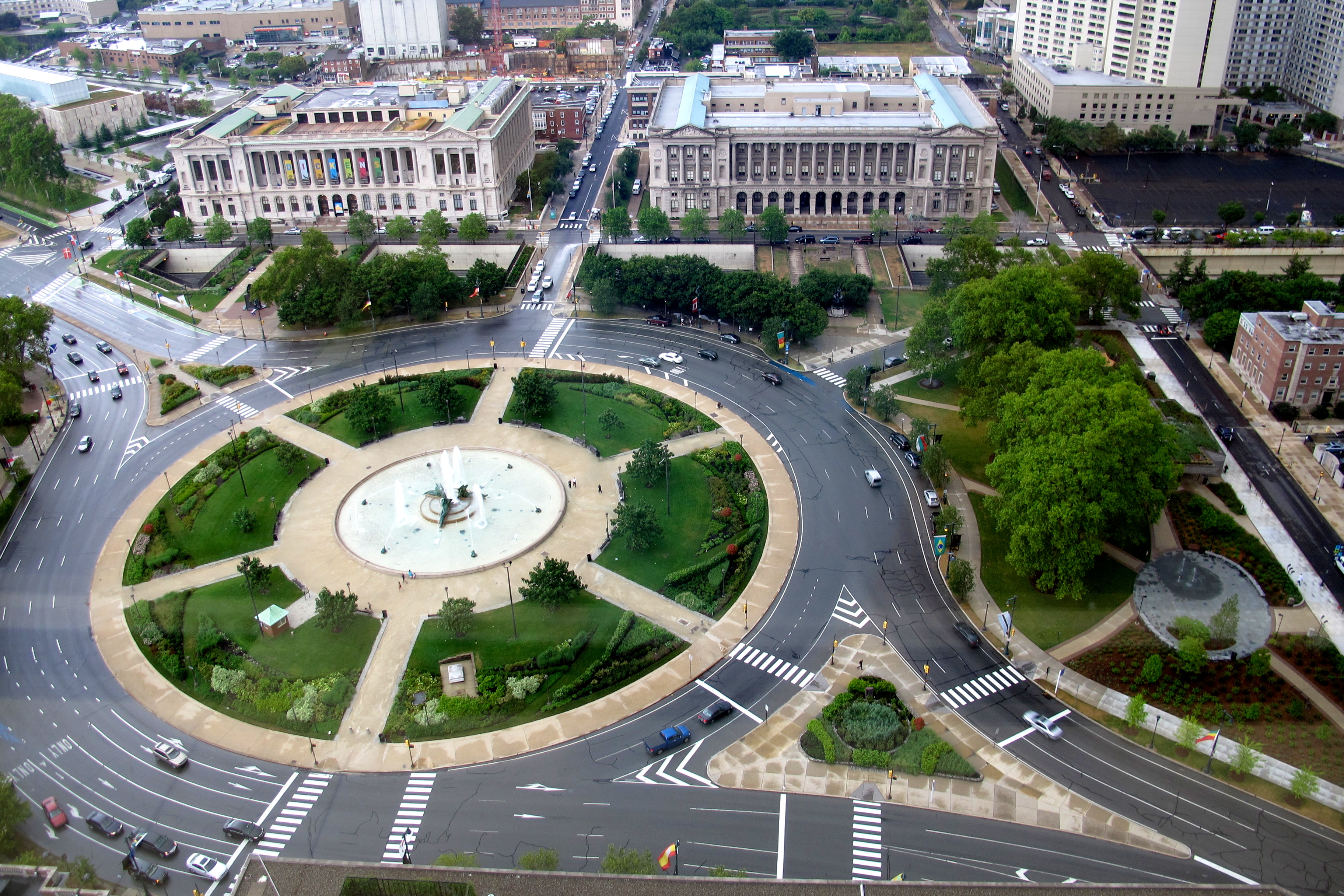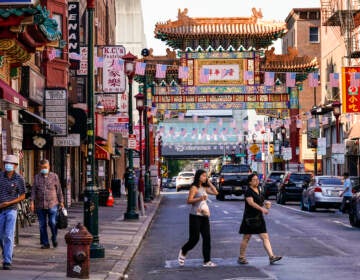On Logan Square: From Square to Circle… and maybe back again?

In celebration of what would have been Jane Jacobs’ 100th birthday on May 4, we’re taking a look at these four parks, past, present and future. What has remained the same, what has changed, and what is next for these spaces? We will also explore them in person in a pair of walks happening on Sunday, May 8th as part of this year’s Jane’s Walk weekend.
“The fourth of Penn’s Squares has been whittled to a small traffic island, Logan Circle, in Benjamin Franklin Boulevard, an example of City Beautiful planning. The circle is adorned with a great soaring fountain and beautifully maintained planting. Although it is discouraging to reach on foot, and is mainly an elegant amenity for those speeding by, it gets a trickle of population on fine days. The district immediately adjoining the monumental cultural center of which it is a part decayed terribly and has already been slum-cleared and converted to Radiant City.”
This lone paragraph is all Jane Jacobs has to say about Logan Square in “The Death and Life of Great American Cities”. She returns to each of the other squares to draw lessons on park form, but Logan’s pedagogical well had run dry. Being surrounded by a six-lane asphalt desert will do that.
Logan Square lost its edge in 1917, during the construction of the Benjamin Franklin Parkway. Jacques Gréber, a French landscape architect, designed the circled-square to mimic the Place de la Concorde in Paris. The Free Library and Family Court Building were then modeled after the Hôtel de Crillon and the Hôtel de la Marine in Paris.
Befitting the former site of executions and burials, Logan Square is Philadelphia’s cenotaph square, the heart of its monument mile. Surrounding it, we have heavy institutional presence: the Cathedral Basilica of Saints Peter and Paul, the new Mormon Temple, the Family Court-cum-Kimpton Hotel, the Free Library’s central branch, the Barnes Museum, the Franklin Institute, a senior living center, Moore College of Art and Design, the Academy of Natural Sciences, the Logan Hotel, and United Way’s regional offices. Such a lack of building use diversity stifles an area already choked by cars.
But there are signs that things are improving. Jacobs called Logan “discouraging to reach by foot,” but in 2004, new traffic lights and crosswalks calmed the tempest of traffic surrounding the circle, making it easier for pedestrians to access the manicured island. PennDOT is covering up part of the depressed and depressing Vine Street Expressway, effectively building a small bridge over the automobile moat and reclaiming part of Logan Square’s northern edge back from the sunken highway. Beyond the immediate periphery, new residential developments are recalibrating the balance of the area’s mix of uses.
Perhaps most importantly, Center City District’s (CCD) 2012 overhaul of Sister Cities Park, the triangular carving left from Logan’s eastern edge turned circle, immediately transformed it from a “devastating place” in the words of CCD’s Vice President of Planning, Nancy Goldenberg, into a destination.
Sister Cities Park’s success challenges one of Jacob’s central arguments: that parks, like streets, depend largely on the vitality of the surrounding area for their success.
“The main problem of neighborhood park planning boils down to the problem of nurturing diversified neighborhoods capable of using and supporting parks,” wrote Jacobs, scoffing at the idea of using a park to revitalize a decaying neighborhood. Programming-rich and excellently designed, Sister Cities Park turns Jacobs’ “main problem of neighborhood park planning” on its head: A well designed park is nurturing diversified neighborhoods around it.
Sister Cities has been a huge visitor draw despite being surrounded by an unwelcoming streetscape and a dearth of diverse uses. But Jacobs has an out: Sisters Cities Park is not a passive place. The CCD offers a full schedule of programs, which, along with the cafe and spraygrounds, serve as “demand goods” drawing families to the park. Such demand goods, in sufficient quantities, can “convert a dreadful neighborhood liability into an outstanding neighborhood asset,” writes Jacobs.
On the opposite end of Logan Square, Aviator Park remains a “polite Skid Row” to borrow from Jacobs’ description of a thoroughly different Franklin Square. After renovating the park in 2007, the CCD handed it back to the city, which lacked the resources to plan a programming calendar for it. Without Sister Cities’ pond or the circle’s Swann Fountain, Aviator Park wants for amenities or a robust diversity of building uses nearby to draw in natural users.
In 1999, CCD dared to propose re-squaring Logan Circle; the idea was quickly abandoned. Last year, Greg Heller, now head of the Philadelphia Redevelopment Authority, raised the idea again. Might Philadelphia resurrect Logan’s square one day? Jacobs would surely say yes.
WHYY is your source for fact-based, in-depth journalism and information. As a nonprofit organization, we rely on financial support from readers like you. Please give today.






